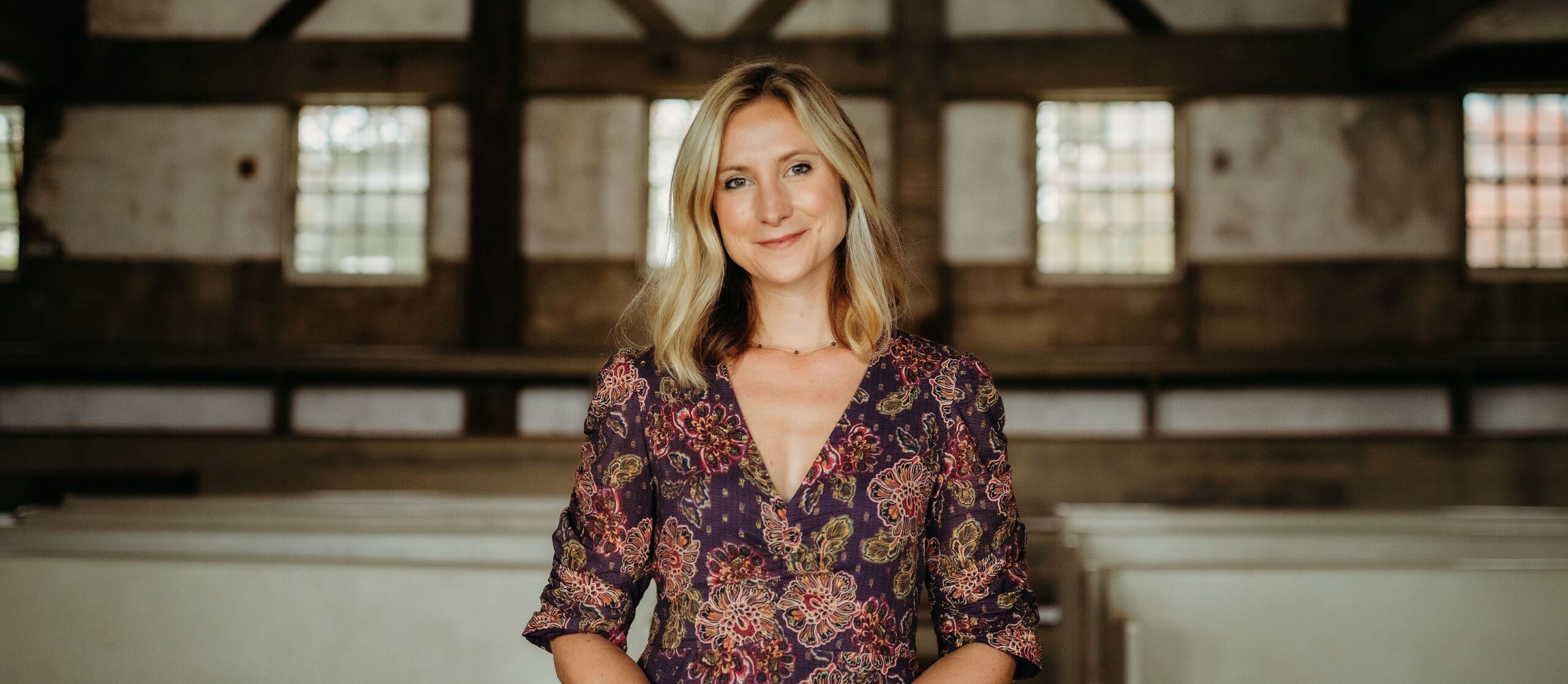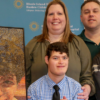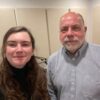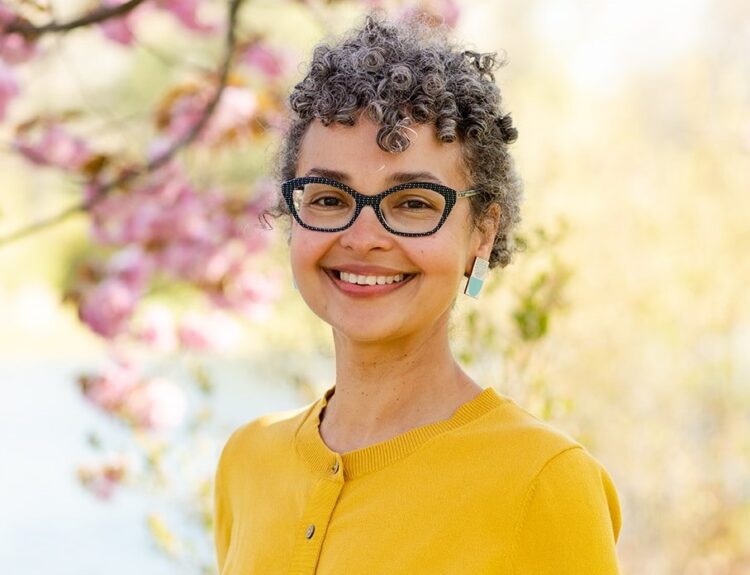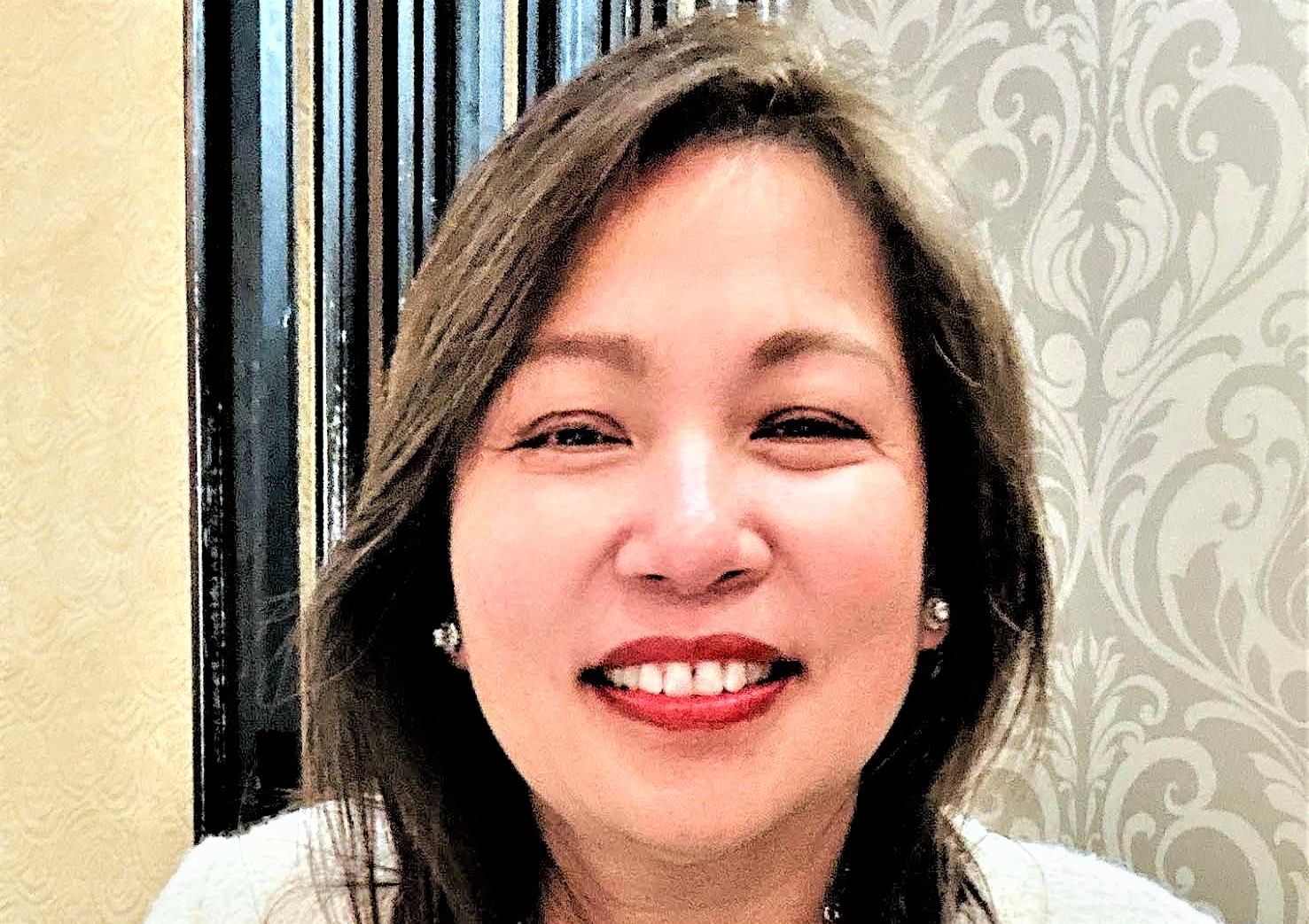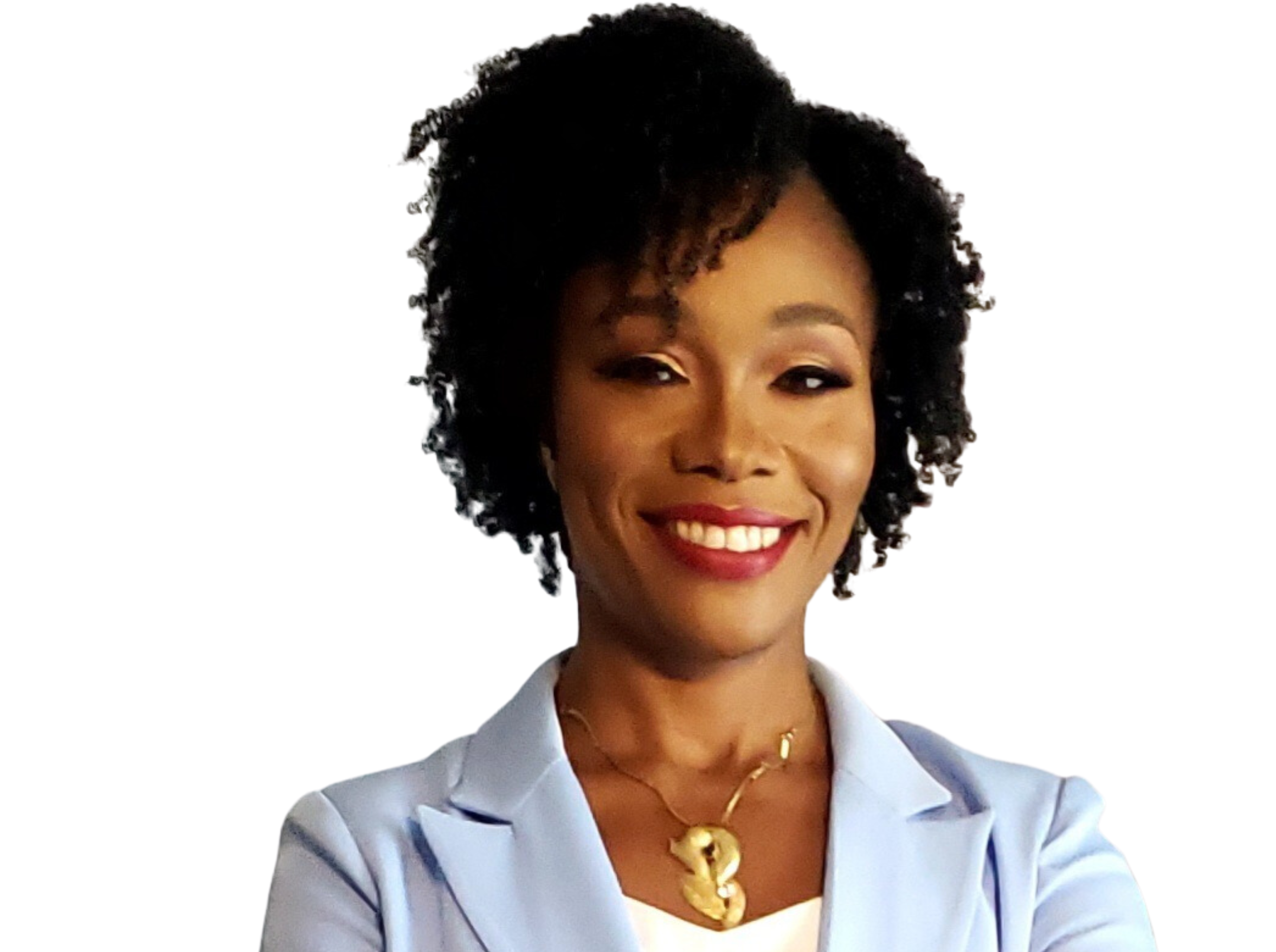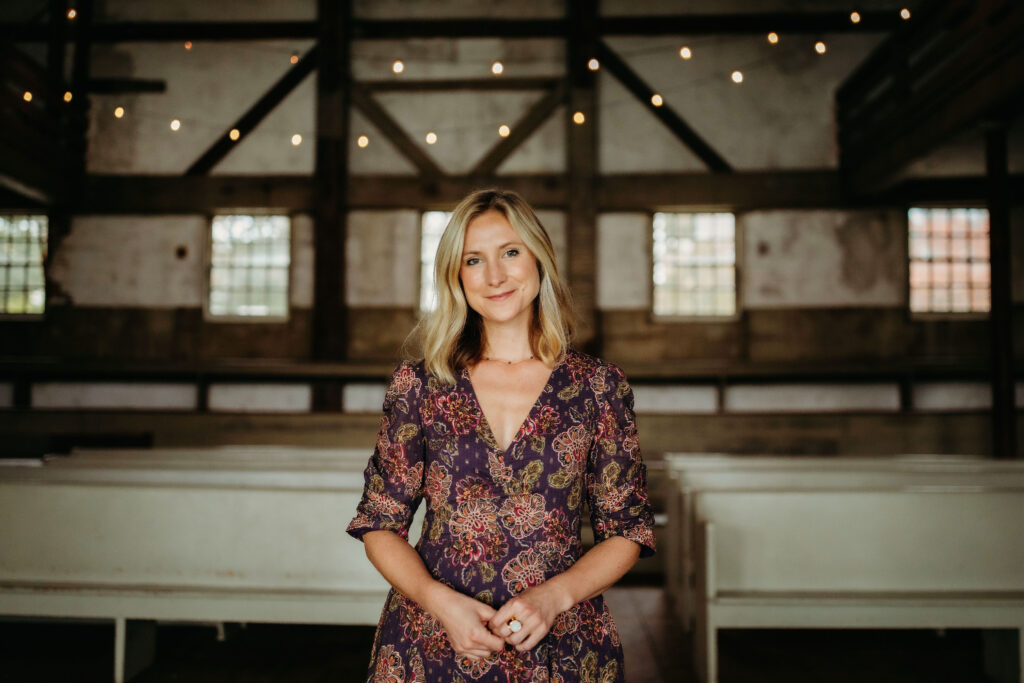
A belated congratulations, Rebecca, on becoming executive director of the Newport Historical Society [in 2022]! Can you give us a summary of the society’s mission and holdings?
Thank you! It has been over a year since I stepped into the role, and it’s been an incredible experience so far. I love the work we do here, and better still, the people I work with.
The Newport Historical Society is a driving force in collecting, documenting, and preserving Newport history—its buildings, its records, and the stories of its people. Whether you’re a history buff or an art lover, a tourist or a teacher, or you’re just curious about the past, we’re here to help you get answers.
In addition to the headquarters at 82 Touro St. in Newport, the society owns other properties, too, correct? What are they and what is their historical significance?
Across six treasured properties and incredible collections that include manuscripts, decorative arts, and photography, we have collected five centuries of stories.
Great Friends Meeting House, one of our most recognizable properties, was built in 1699 and is the oldest surviving house of worship in Rhode Island. Quakers, as they were dubbed by their detractors, were the most influential of Newport’s numerous early congregations.
The Wanton-Lyman-Hazard House is the oldest surviving house in Newport and was built in 1697 for Stephen Mumford, a merchant and founding member of Newport’s Seventh Day Baptist congregation.
The Seventh Day Baptist Meeting House was constructed in 1730 by Richard Munday on Barney Street and can now be seen as part of the Newport Historical Society’s building—an incredible piece of history I have the privilege of working alongside every day.
The Newport Colony House is the fourth oldest statehouse still standing in the United States and was designed by the same architect who designed Trinity Church and the Seventh Day Baptist Meeting House in Newport.
Built in 1762, The Brick Market Building is owned by the city but managed by the society and is home to the Museum of Newport History and Shop.
And lastly, we oversee the Green End Fort, constructed in 1780 to defend against the British Army during the Revolution.
All these properties can be explored through tours with our team of expert guides, and we invite Rhode Islanders and visitors alike to come spend time with Newport’s incredible architecture and history.
Speaking of history, can you give us a brief history of the society?
The Newport Historical Society has been around for 170 years and will be here for another century and beyond. We love what we do, and we love having the opportunity to learn alongside our visitors, patrons, and members.
Newport Historical Society started as a branch of the Rhode Island Historical Society in the early 19th century. By 1853, several prominent Newporters recognized the need for an organization devoted specifically to the history of Newport County, and a charter was issued in 1854.
We’ve continued to grow our membership, enhance our properties, and expand our collections ever since, and the rest, as they say, is history.
This is Black History Month in America and so it’s appropriate that the society has just launched “Voices from the NHS Archives,” described on your website as “a new digital resource that centers Black and Indigenous Experiences.” Please give us an overview and then we’ll drill down into some details.
Voices from the NHS Archives is an expansive research project that centers the Black and Indigenous experiences embedded in Newport’s historical record. This digital tool is the culmination of four years of work, feedback from dozens of experts and advisors, and the review of 4,000 records from the NHS archives.
We’re so excited that it’s now online and making this important part of our history available to people everywhere.
What are some of the documents, records and other materials that have been digitized?
We are trying to digitize and make accessible every kind of record imaginable. The database includes church records, Census logs, business papers, ship logs, and more. Work on this project will be ongoing indefinitely, with more documents regularly digitized, catalogued, and posted for public access.
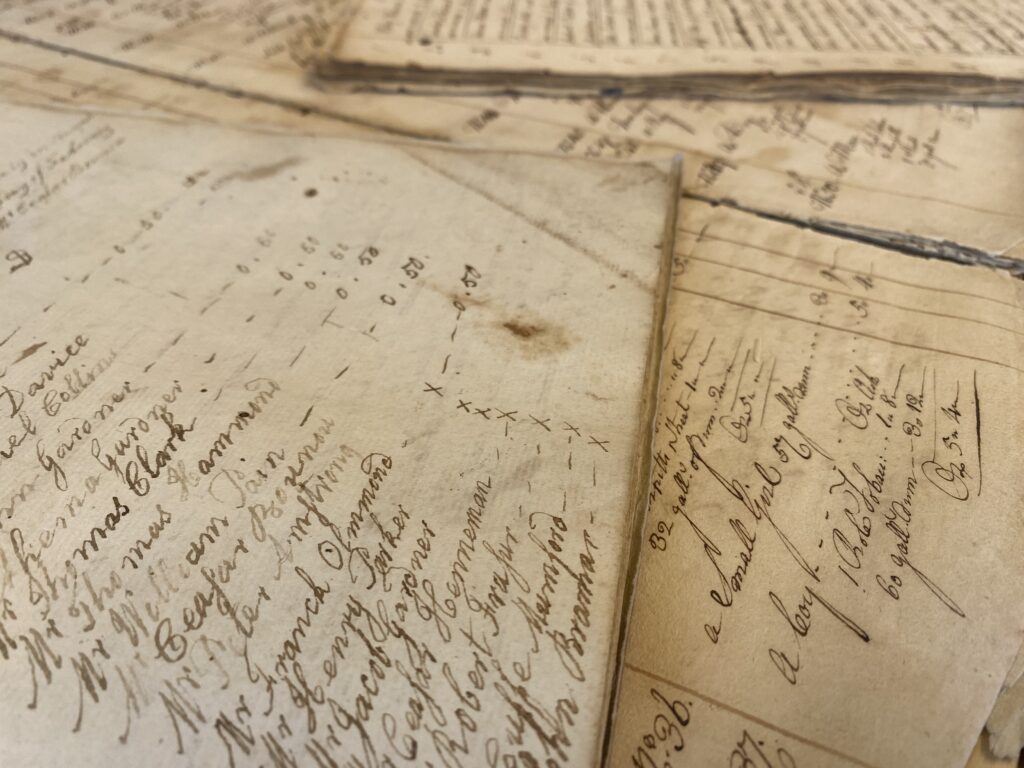
OK, some details. A search can begin by “Person Status,” “Race” and “Gender.” Someone can also search by “Events” and there, under “Type,” we see more than two dozen ways to search. Describe a few of them.
Our staff and researchers spend a tremendous amount of time studying and deciphering these 17th to 19th century documents, and we want to make them as searchable and understandable as we can. You can search not only by race, gender, and status—such as enslaved person or enslaver—but by occupation, role in the slave trade, and beyond. Across our team and with the researchers and partners who have long tapped into our resources, we discussed and considered many different entry points that may help users make the most of the database.
You also have a number of “Featured Stories.” What are they?
We curated 15 stories of people who lived and worked in Newport during the era of slavery in an attempt to not only lift up these individuals and their experiences but also to illustrate the kind of narrative that can be built through this in-depth archival research. These stories are just the beginning and we’re eager to grow this part of the collection.
Who wrote them and how did they write these stories? They were meticulously researched and documented.
Thank you—I’m so proud of and inspired by the team behind this project. Our Collections and Digital Access Manager Kaela Bleho and Deputy Executive Director Ingrid Peters were the champions for the initiative from the get-go and helped spearhead the curation and creation of the Featured Stories. The project has been aided by many Buchanan-Burnham visiting summer research fellows.
The stories also have an “Ask a Curator” button. What is that? It seems like the ultimate user-friendly tool.
The Ask a Curator button is a way to directly connect with our team to get help answering questions or accessing the database.
We built the tool as part of the Voices database, but the invitation stands across the board. Reach out and let us know how we can help. There is nothing we love more than when a new visitor stops at one of our properties, a new researcher makes an appointment to access our collections, or we hear from someone just starting their exploration of Newport history.
How long has “Voices” been in the making?
We have been working on this project for more than four years, and really ramped up during the pandemic. We were sad to close our doors to the public but used that time to examine thousands of documents in painstaking detail. We’re thrilled to finally be ready to bring the project to the fore and make these materials more accessible to the public.
Why was it so important for the society to invest so much time and energy into this project?
Traditional histories of Newport focus on the white and the powerful. The materials we reviewed, digitized, and added to the database refocus the telling of our 17th to 19th century history by emphasizing the lives, stories, and personhood of Black and Indigenous Newporters who were enslaved, as well as the vibrant community of free people of color who lived and worked in the town in the years that followed.
Is “Voices” continuously updated — and will there a point when you stop?
Only 2 percent of our manuscript collection has been digitized to date. We have a tremendous amount of work ahead and we are energized to continue that work to add to the database—and to our collections—for as long as we can uncover and share new materials.
“Voices” is free and open to the public, correct?
That’s correct.
There is so much to experience—and so many interesting stories to share—in this diverse and dynamic community. Connect with Newport and your neighbors in a new way by accessing these free materials or attending one of our programs or events.
Visit www.newporthistory.org to check out our calendar and learn more.
Before we close, please tell us about some of the upcoming NHS events.
Continuing on the theme of Voices, we have a book talk on March 6 with Dr. Shirley Green on her new book, “Revolutionary Blacks: Discovering the Frank Brothers, Freeborn Men of Color, Soldiers of Independence,” and on March 21, Rhode Island historians Erik Chaput and Russell DeSimone will discuss one of the most important civil rights activists of the 19th century: George T. Downing.
We’re especially excited about the free exhibit we have planned for May, which will bring to life some of the individuals identified in the database. If anything that we’ve talked about here piques your interest, please come check it out!
And finally, as we typically do with our Q&As, give us a snapshot of your background. We met you when you headed newportFilm. What came before – and after that?
I’m originally from Wakefield, Massachusetts, where my parents still live and my mother, Nancy, is the town historian. I first came to Newport as a student at Salve Regina in Cultural & Historic Preservation, and I knew I would find my way back. Interestingly, one of my first internships in college was right here – at the Newport Historical Society! After getting my master’s degree at the Winterthur Program in American Material Culture at the University of Delaware, I held various positions in arts administration in Rhode Island before landing at newportFILM for seven years, where I served as executive director. Immediately before coming to the NHS, I was the first executive director of the New York Yacht Club Foundation for Historic Preservation.
It’s great to be back, especially at this exciting moment for an organization with as rich a tradition as Newport Historical Society.

